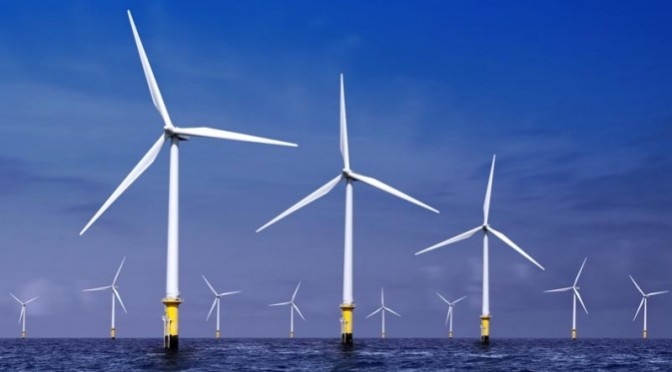Energy Minister, Fergus Ewing, has announced the formal consent of two adjacent offshore wind farm applications in the outer Moray Firth.
Moray Offshore Renewables Limited (MORL) and the Beatrice Offshore Windfarm Limited (BOWL), together will be the world’s third largest offshore wind farm, with up to 326 wind turbines.
The developments, sited off the Caithness coast, will be capable of generating up to 1,866 MW of electricity, enough to power over one million homes, and will be worth up to £2.5 billion to the Scottish economy.
The consents are granted subject to strict conditions which will mitigate and monitor a range of potential impacts, including in relation to birds and other environmental considerations.
The developers have to undertake local, regional, and strategic bird monitoring and have to comply with a number of plans such as the Environmental Management Plan and the Operation and Maintenance Programme to ensure effective mitigation takes place.
Mr Ewing said:
“Scotland has the potential to lead the development of an exciting, new renewables industry as offshore wind moves into deeper waters. Offshore renewables represent a huge opportunity for Scotland; an opportunity to build up new industries and to deliver on our ambitious renewable energy and carbon reduction targets.
“These wind farms alone could generate gross value worth up to £2.5 billion over their lifetime and generate up to 4,600 jobs during peak construction and up to 580 once in operation.
“Offshore wind has been delayed by the process of the UK Government’s Electricity Market Reform, but these two consents today offer tangible progress towards real investment opportunity in Scotland.
“The Scottish Government is committed to the successful and sustainable development of an offshore wind sector, which could lead to a potential inward investment of £30 billion and support up to 28,000 direct jobs and a further 20,000 indirect jobs, generating up to £7.1 billion for the Scottish economy. As this industry develops, our enterprise agencies are working to secure supply chain development for Scotland.
“The Scottish Government wants to see the right developments in the right places and Scottish planning policy is clear that the design and location of any onshore and offshore wind farm should reflect the scale and character of the landscape or seascape and should be considered environmentally acceptable.”
The Moray Offshore Renewables Limited and Beatrice Offshore Windfarm Limited consents are available at http://www.scotland.gov.uk/Topics/marine/Licensing/marine/scoping
A two-stage formal public consultation process was undertaken for each project. The first, conducted in April, May and June 2012 for BOWL, and August, September and October 2012 for MORL, related to the original applications for consent under section 36 of the Electricity Act 1989, the marine licence applications, and supporting environmental statements.
The second, for BOWL, related to the submission of further environmental information in the form of a supplementary environmental information statement. This was submitted to Marine Scotland in May 2013. This included a change to the proposed cable route, bottlenose dolphin population modelling and a Habitats Regulations Appraisal report.
The second, for MORL, related to the submission of additional environmental information relating to ornithological matters. This was submitted to Marine Scotland in June 2013.
Consents under section 36 the Electricity Act 1989 are granted subject to strict conditions which will mitigate and monitor a range of potential impacts.
BOWL consists of one section 36 consent for 750MW, and MORL consists of three separate section 36 consents (Telford, Stevenson and MacColl) of 372MW each.
The BOWL application was received in April 2012 and consultation undertaken. The supplementary environmental information statement was submitted in May 2013 and a second round of consultation undertaken. The entire process has taken 23 months.
The MORL applications were received in August 2012 and consultation undertaken. The Additional Ornithological Information was submitted in June 2013 and a second round of consultation undertaken. The entire process has taken 19 months.
The consents are granted subject to conditions which will mitigate and monitor a range of potential impacts. These include, for example, the requirement for an agreed Project Environmental Monitoring Programme and an Environmental Management Plan. Further details of these conditions and others are set out in the decision letter and consent conditions document.


